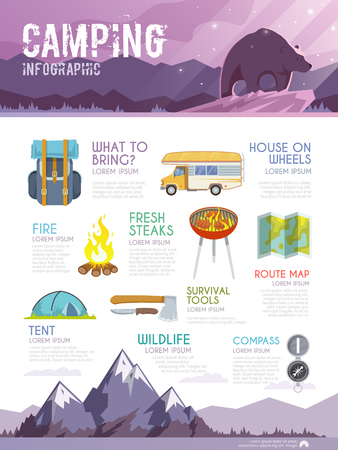The best time of year for stargazing is in winter season, when the central part of the galaxy becomes visible. The nights are longer, the air is drier, and there are fewer synthetic lights to disrupt your view of the stars.
What does it mean to go glamping?
Delighting in the stargazing experience is even better when the moon is new (or in a crescent phase) for optimum exposure.
1. Search for
Stargazing is the act of simply seeking out. It can entail determining constellations, comprehending lunar phases, or simply enjoying the beauty of our universe. Many people enjoy the experience by merely existing back and observing the evening sky, but you can also use devices like telescopes and field glasses to see even more detail.
Before stargazing, find a dark area that is without light contamination (such as a rural area or state park). Check the weather prediction to make sure clear skies, and try to go on a new moon evening. The moon will certainly wash out the pin pricks of stars and can be distracting.
Take into consideration bring a red-filtered flashlight, an observation log, and a planisphere to make the most of your stargazing time. You can even download and install a stargazing application to help you get started.
2. Take a Deep Breath
The star-studded skies are thrilling, promoting a sense of wonder about our area in deep space. Stargazing can also be an incredibly engaging task to do with liked ones. Encourage friends and family to separate from their electronic devices and focus on each other under the celebrities.
Try spotting constellations, like Orion's Belt or the Large Dipper. Or make use of the celebrities as a huge unseen blackboard, mapping their tracks with your finger. You can also find celestial spots by utilizing an application or web site to track flyovers of the international space station and satellites.
Bear in mind to maintain your eyes secured from light pollution by leaving your phone in a safe place, shutting off your flashlight tent sales near me or preventing brighter light sources (also evening mode). For a a lot more immersive experience, consider camping in a dark area far from cities and communities.
3. Relax
Whether you're a novice or an experienced stargazer, the appropriate method to this peaceful leisure activity can raise your experience. Below are some suggestions for appreciating your evening under the stars:
Put in the time to familiarize yourself with constellation patterns, and take into consideration using a telescope or field glasses for more boosted viewing. Make certain you dress comfortably and pick an area far from light pollution for finest results.
Be planned for long stretches of stargazing by bringing snacks like granola bars or fruit, and a thermos filled with a warm beverage. Likewise be sure to bring bug spray to avoid obtaining bitten.
After arriving at a dark skies location, shut off any flashlights or phone displays and allow your eyes to change for about thirty minutes. This procedure is called dark adaptation and will aid you see much more celestial objects.
4. Get in touch with Nature
Stargazing needs a little bit of prep work, consisting of finding dark skies locations and learning more about constellations and other holy phenomena. However it can additionally be a very stress-free and therapeutic task, especially when performed in a tranquility and tranquil establishing away from the lights of city streets and autos.
Try to see a place where there's marginal light pollution, such as a national park or an area much from the city. This will make it less complicated to see the stars.
It's a good concept to bring some treats and a thermos of hot chocolate, specifically if you plan to stay out for an extended period of time watching for meteor showers or lunar eclipses. If you're feeling cool, a blanket or jacket can aid keep you warm.
5. Get in touch with Yourself
The stargazing experience can be a deeply relaxing, mindful intermission far from the chaotic pace of life. If your mind wanders, bring it back to your breathing and concentrate on the views, sounds and experiences of the moment.
If you're planning to invest a very long time outside, bring snacks and drinks. Likewise consider bringing a chair or covering so you can stay comfortable for hours at once.
Likewise, remember to bring a red flashlight. This aids maintain night vision and makes checking out a star map or planisphere less complicated. If you want to see the International Space Station, or any other satellites and celestial objects, check online prior to your journey to find out when they're flying overhead. Also, consider going to during a new moon or a crescent moon phase to see more of the stars.
Is RV camping Glamping?
